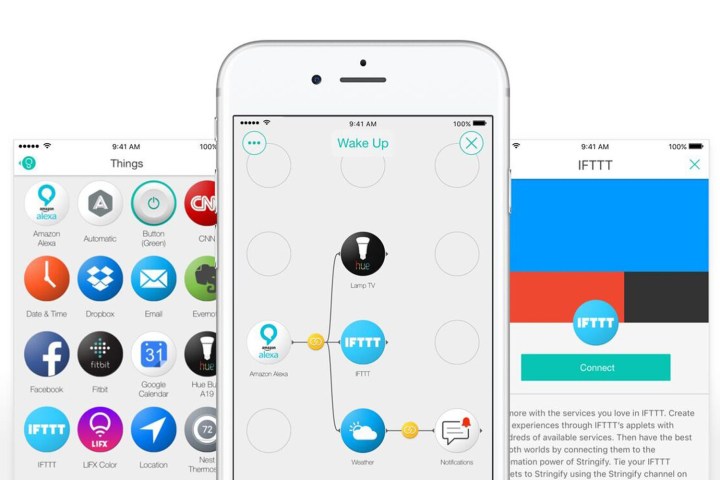
Using what it calls “Flows,” Stringify has been an upstart trying to compete in a difficult spot. It differed from IFTTT in that it supported multiple integrations in one flow, rather than a one-to-one recipe IFTTT is known for. Until now, the app had only been available on iOS, but the beta for Android is now live on Google Play. There is still no web portal, however.
The functionality appears to be a carbon copy of the iOS version, only with the new partnerships now playing a role for both. IFTTT essentially added Stringify to its arsenal, rather than the other way around, allowing users to use flows in recipes.
In what IFTTT CEO, Linden Tibbets, described as “a win for everyone,” he praised the integration for the level of creativity adding Stringify will being to Flows and recipes. Echoing his counterpart, Stringify CEO Mike Yurochko called it a “win-win” in that the deal bridges the hundreds of services across IFTTT with Stringify’s automation setup.
Right now, Stringify supports 500 products and services that are a mixture of wearables, smart home devices, digital services, and apps. IFTTT has a broader reach, despite its more rigid sequential system in automating things, at least when compared to how Stringify’s flows work.
Adding Steam and Twitch to the fray brings Stringify firmly into the gaming world, making the app usable for those looking to do cool things around the games they play or watch. Smappee’s pedigree in home energy consumption should fill a gap Stringify simply didn’t have before. Foobot contributes to that in a way because of its focus on healthier living environments, while Sengled is another smart home lighting vendor to add to others already supported.
Download for iOS Download for Android
Editors' Recommendations
- How to use the Google Home app on a computer
- Roborock shows off highly automated robot vacuums at CES 2024
- IFTTT routines for fall
- Your Whirlpool smart oven can now act as an air fryer, too
- Best free workout apps for Android and iOS



